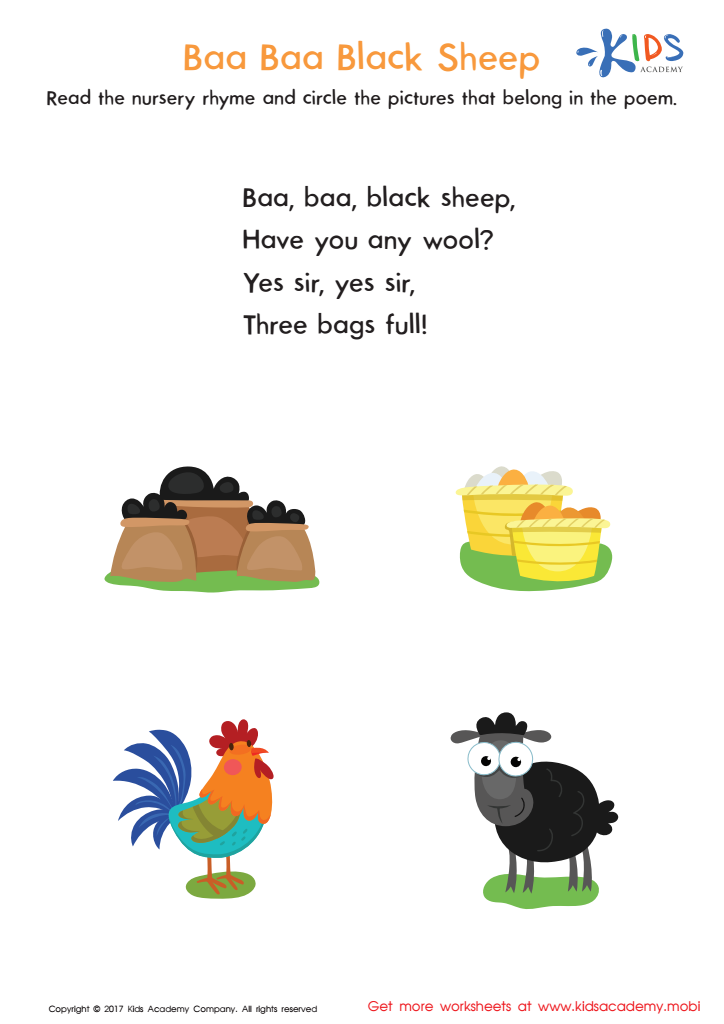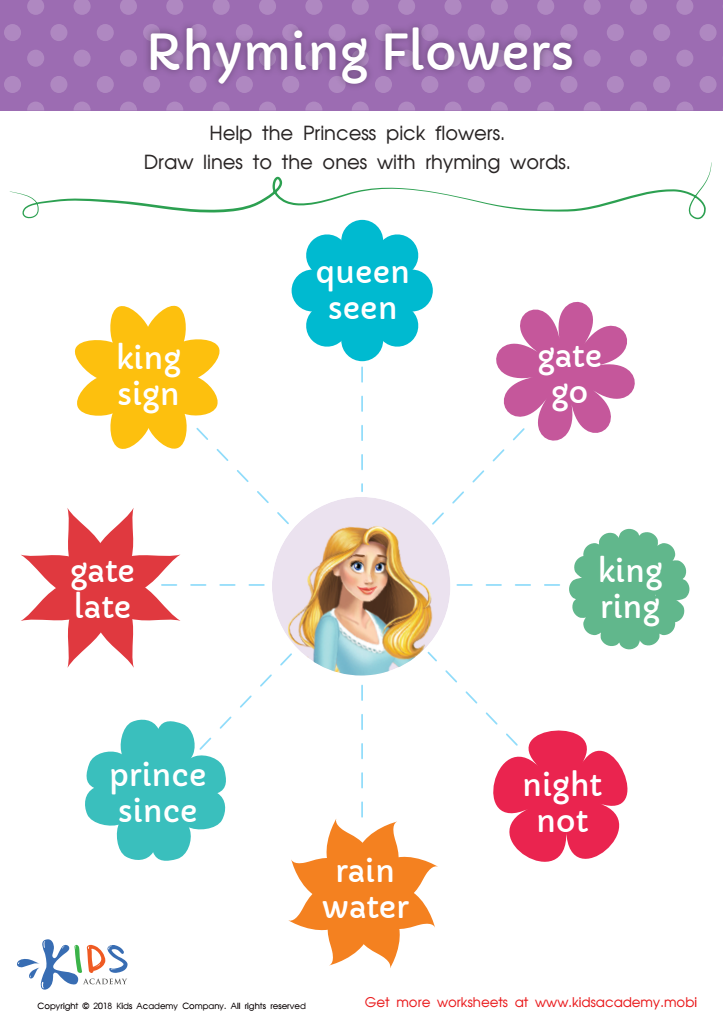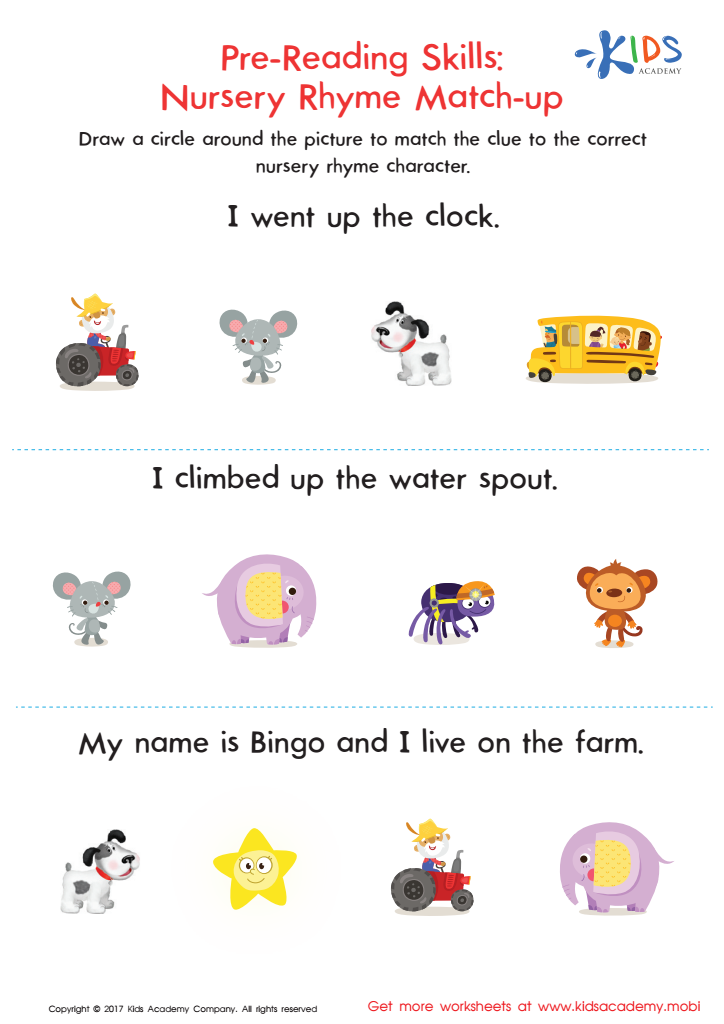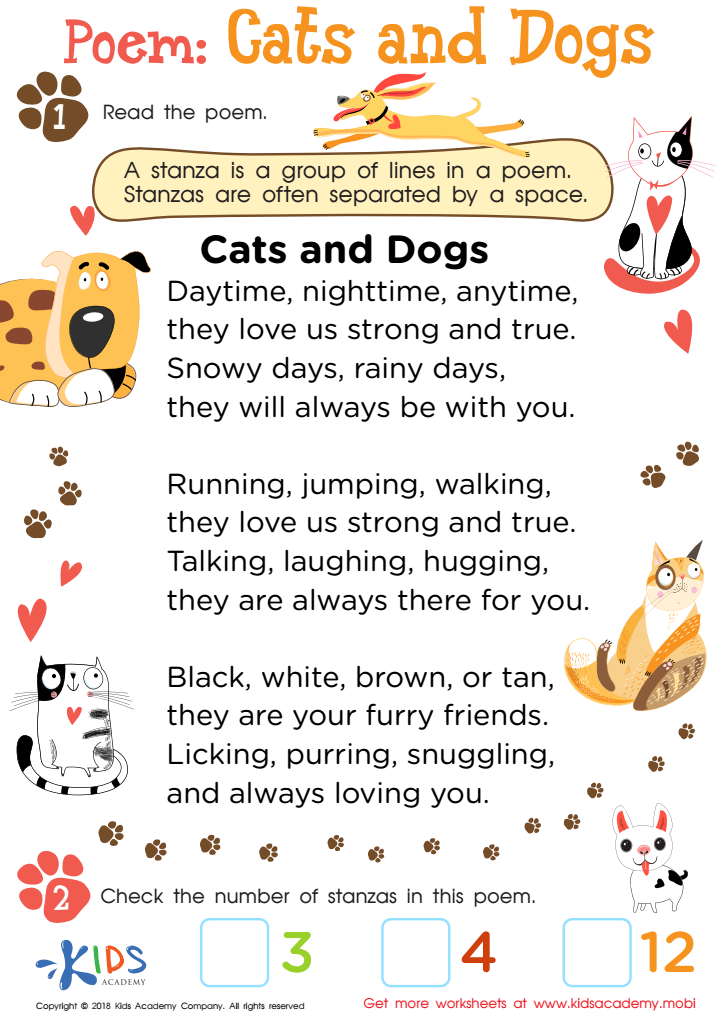Rhyme recognition Phonics Worksheets for Ages 5-8
5 filtered results
-
From - To
Explore our engaging Rhyme Recognition Phonics Worksheets designed specifically for children ages 5-8. These interactive activities help young learners develop essential phonemic awareness by identifying and creating rhymes. Each worksheet is crafted to be both fun and educational, supporting early literacy skills in a playful manner. With colorful illustrations and a variety of exercises, children will enhance their listening abilities and strengthen their understanding of word patterns. Perfect for at-home learning or classroom use, our worksheets provide an effective way to promote reading readiness. Unleash your child’s potential in reading and language with our captivating rhyming resources!


Baa Baa Black Sheep Printable


Rhyming Flowers Worksheet


Phonological Awareness: Assessment 2 Worksheet


Nursery Rhyme Match–Up Worksheet


Poem: Cats and Dogs Worksheet
Rhyme recognition phonics is crucial for children aged 5-8 as it serves as a foundation for early literacy development. At this age, children are still mastering the basics of reading and writing, and rhyme recognition helps enhance their phonemic awareness—the ability to hear, identify, and manipulate sounds in words. When children engage with rhymes, they enjoy playful sounds, which makes learning more engaging and memorable.
Understanding rhyme helps improve vocabulary and spelling skills. Recognizing patterns in similar-sounding words equips children with tools to decode unfamiliar words, boosting their confidence in reading. Furthermore, rhyme recognition fosters listening skills, enabling young learners to focus on the nuances of language—an essential skill for effective communication.
For educators and parents, programs that emphasize rhyming expose children to high-quality literature and poetry, sparking their interest in reading. This early exposure not only builds linguistic competence but also promotes cognitive development, critical thinking, and creativity.
Ultimately, caring about rhyme recognition phonics means investing in a child’s literacy journey, equipping them with the skills necessary to succeed academically and fostering a lifelong love of reading. By nurturing this foundational element, parents and teachers can prepare children for future educational endeavors.
 Assign to My Students
Assign to My Students














